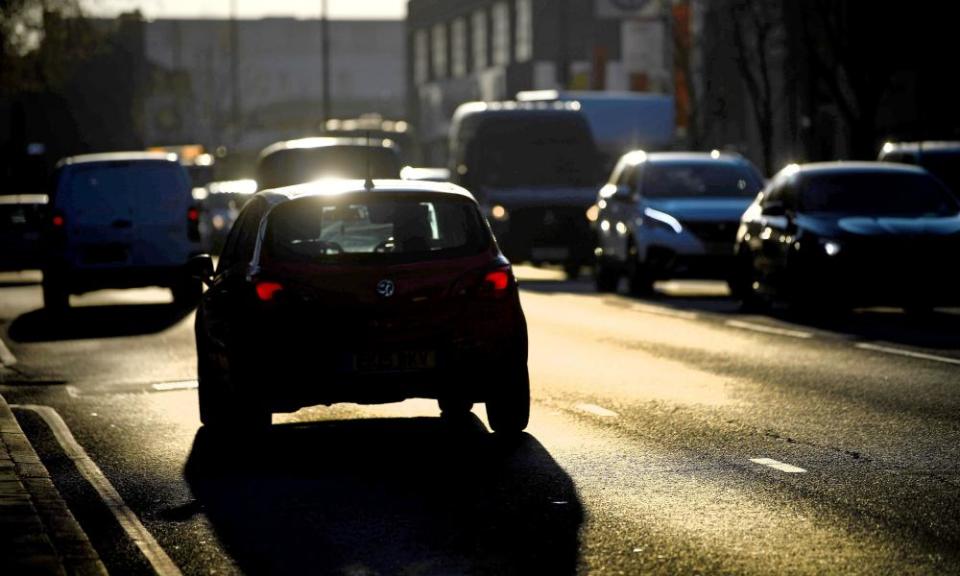'Rat-running' increases on residential UK streets as experts blame satnav apps

“Rat-running” on residential streets has increased dramatically in the past decade, according to statistics from the Department for Transport.
London has experienced a doubling in motor traffic on quiet C roads since 2008, while in most other parts of the UK polluting motor traffic has increased more greatly on residential streets than on A or B roads.
Motoring organisations and anti-traffic campaigners blame the internet. The AA president Edmund King has highlighted the rise of online deliveries, while urban liveability experts point the finger at smartphones and satnav apps including shortcutting app Waze.
Another reason is bloat. In 2007, there were 27m registered motor vehicles in the UK. There are now 38.3m, with experts predicting numbers will rise above 40m within the next two years. Even if all new cars and vans were powered by batteries rather than fossil fuel, that would not solve congestion or reduce road danger, say campaigners.
The government’s air quality expert group said in 2019 that brake wear, tyre wear, and road surface wear contributed to more than half of the particle pollution from road transport – not something that will be solved by switching to electric vehicles.
Between 2018 and 2019, urban minor road traffic increased by 3.2% across the UK, the DfT said in a recent data release. But looking at the regional figures reveals a startling increase in the use of residential roads by motorists since 2009.
Driving on residential streets remained stable in London between 1994 and 2008. From 2009 onwards, however, motoring on such roads almost doubled from 5.5bn vehicle miles to nearly 9.5bn in 2019.
Graphs for other regions in the UK during the same period show a similar rise in rat-running. In north-west England, vehicle usage on C roads increased from 9bn miles in 2009 to just under 13bn miles last year. The same steep rise happened in north-east England, although the increase did not start until 2012.
The DfT says the general rise of road traffic is because of rising population, economic recovery and the reduced cost of owning and running motor vehicles.
“The massive increase in traffic on C roads is probably due to a combination of home shopping and van-based home services,” said King. The greater use of satnavs to avoid traffic congestion was also a likely factor, he said.
Real-time smartphone routing apps such as Waze aim to reduce motorists’ journey times by diverting them away from bottlenecks, which often means cutting through residential areas. You can “drive like a local with shortcuts,” claims the Google-owned app.
Rolled out as FreeMap Israel in 2006 – before the iPhone had GPS, and when Android was still in development – Waze is edited on the fly by volunteerswho report traffic jams, crashes, speed cameras, and weather conditions. The app also tracks the location and speed of users to give the 130-million strong global user base real-time fastest-route information.
A Waze spokesperson said: “Roads and streets weren’t built for the volume of cars that exist today. On average, the number of vehicles on UK roads has increased by 594,000 per year since 2012 and road networks have struggled to keep up with this increase. Waze routes its users through the public roads infrastructure, based on local driving laws and the road signs in the area.”
The active travel charity Living Streets said smartphone apps such as Waze were “wreaking havoc on our streets”.
The campaign group’s Lambeth branch said: “Traffic jams are popping up on once-quiet residential roads as navigation apps like Waze direct traffic down roads that were never designed to take them.”
Danny Williams, a Lambeth-based cycle campaigner said London had to “work out which roads are going to be prioritised for motor traffic and which roads are to be prioritised for people”.
He said: “What London needs is an overarching plan of what it’s going to do with its roads. Otherwise it’s just going to keep getting messier and messier, and no one is going to be happy.”
This concern is echoed by Alison Stenning, professor of social and economic geography at Newcastle University, and an activist for Living Streets on north Tyneside. “We should not be sending more traffic down residential roads that already have high levels of pollution,” she said. “We need not just to see where traffic is going, but aim to reduce it.”
Stenning said that many rat-running motorists – whether guided by apps or not – used residential streets to “get from A to B as fast as possible” but did not want heavy traffic and fast cars on their own street.
“We have to deal with that disconnect,” she said.

